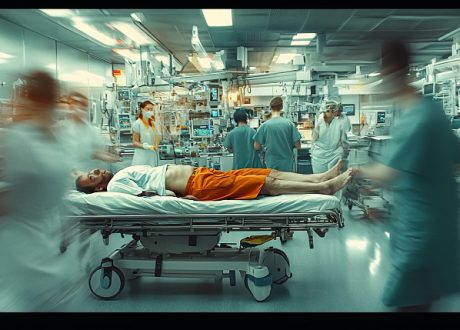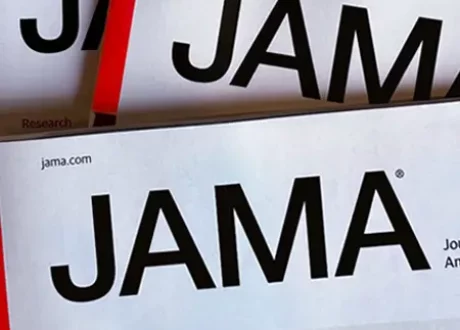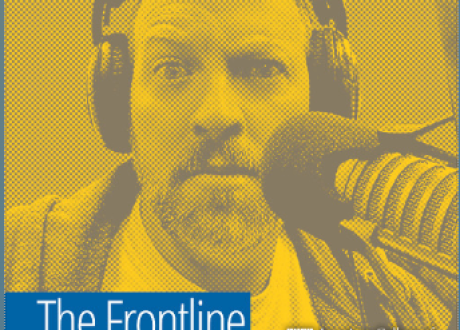Medical scribes assist physicians by charting patient encounters in real-time. Scribes are increasingly used to address clinical documentation burdens on physicians and can improve workflow, efficiency, and communication.1 However, scribe use necessitates physicians proofreading encounter notes to check for documentation errors before closing the medical record, which could subsequently increase documentation burden and mitigate potential benefits to scribe use. Prior studies typically examined small groups of physicians over a limited period and focused on markers of physician satisfaction, throughput, and revenue, with few studies quantitatively assessing changes in medical record closure practices.2,3 Medical record closure time is used as an indicator of physician documentation burden, a quality improvement measure, as well as one reflection of efficiency and burnout risk.4,5 This study evaluated medical record closure outcomes before and after the use of medical scribes.
After approval and waiver of informed consent by the Oregon Health & Science University institutional review board, this retrospective cohort study analyzed electronic health record (EpicCare) audit log data from ambulatory encounters between 2014 and 2019. Oregon Health & Science University is a large academic medical center with an internal scribe program, allocating scribes at physician request.6 We defined 3 medical record closure performance metrics: medical record closure time (date-time stamp difference between the encounter and physician signature), proportion of delinquent medical records (open >14 days), and proportion of medical records closed after hours (7 pm-7 am on weekdays or anytime on weekends).
These metrics were used to conduct 3 sets of analyses. First, encounter-level differences in outcomes between encounters of physicians who never used scribes and baseline (pre-scribe) performance of physicians who went on to use a scribe were compared. Second, among scribe users, physician-level performance was compared at baseline with outcomes after scribe assignment. Third, focusing on physicians after scribe assignment, encounter-level differences were evaluated between scribed and nonscribed encounters. We excluded encounters with trainees, those unsigned at the time of data extraction, and those with physicians with fewer than 100 encounters. Statistical tests were used to evaluate between-group or pairwise differences in outcome measures, as detailed in the table footnotes. Descriptive statistics were reported as mean (SD) or median (IQR). All analyses were performed using R (version 4.1.2; The R Foundation). All statistical tests were 2-sided, using a significance of P < .05.
The data set included 1 218 528 encounters across 55 clinical specialties, 430 physicians, and 134 scribes. Of the physicians, 101 (23%) used scribes, and 845 981 encounters (69%) were with physicians who never used scribes (Table 1). Of encounters with scribe-using physicians, 209 181 (17%) were at baseline and 163 366 (13%) after scribe assignment (Table 2). Of encounters after scribe assignment, 107 657 (66%) were scribe documented. The median encounters per week for physicians was 11.00 (IQR, 6.00-18.00) and 13.00 (IQR, 8.00-19.00) for never users and scribe users at baseline (P = .02), respectively. Among scribe users, median encounters per week after scribe assignment was 17.00 (IQR, 11.00-25.00) (P < .001 vs baseline), of which 13.00 (IQR, 9.00-19.00) and 5.75 (IQR, 3.12-9.00) were and were not scribe documented (P < .001), respectively.
At baseline, scribe-using physicians had significantly higher median medical record closure times (0.69 vs 0.14 days; P < .001), proportion of delinquent medical records (11.77% vs 2.55%; P < .001), and proportion of medical records closed after hours (28.01% vs 17.44%; P < .001) than physicians who never used scribes (Table 1). After scribe assignment, physicians had nonsignificantly higher median medical record closure time (0.42 vs 0.29 days; P = .40), and lower proportions of delinquent (10.32% vs 10.39%; P = .87) and after-hour medical record completion (24.36% vs 25.76%; P = .20) compared with baseline (Table 2). In the subgroup analyses of encounters after scribe assignment, scribe-documented encounters had significantly higher medical record closure time (0.92 vs 0.19 days; P < .001), proportions of delinquent medical records (9.81% vs 8.97%; P < .001), and after-hour medical record completion (27.58% vs 22.81%; P < .001) than nonscribed encounters.
Physicians using scribes had suboptimal medical record closure practices at baseline compared with colleagues who never used scribes. While scribe assignment did not significantly improve these metrics, significant reductions occurred in encounters that did not use a scribe compared with those where a scribe was used. This suggests that the use of scribes may not be a solution to clinical documentation burdens. Study limitations include the inclusion of a single site, variable rationales influencing the assignment of scribes, and the limitation to ambulatory encounters.










